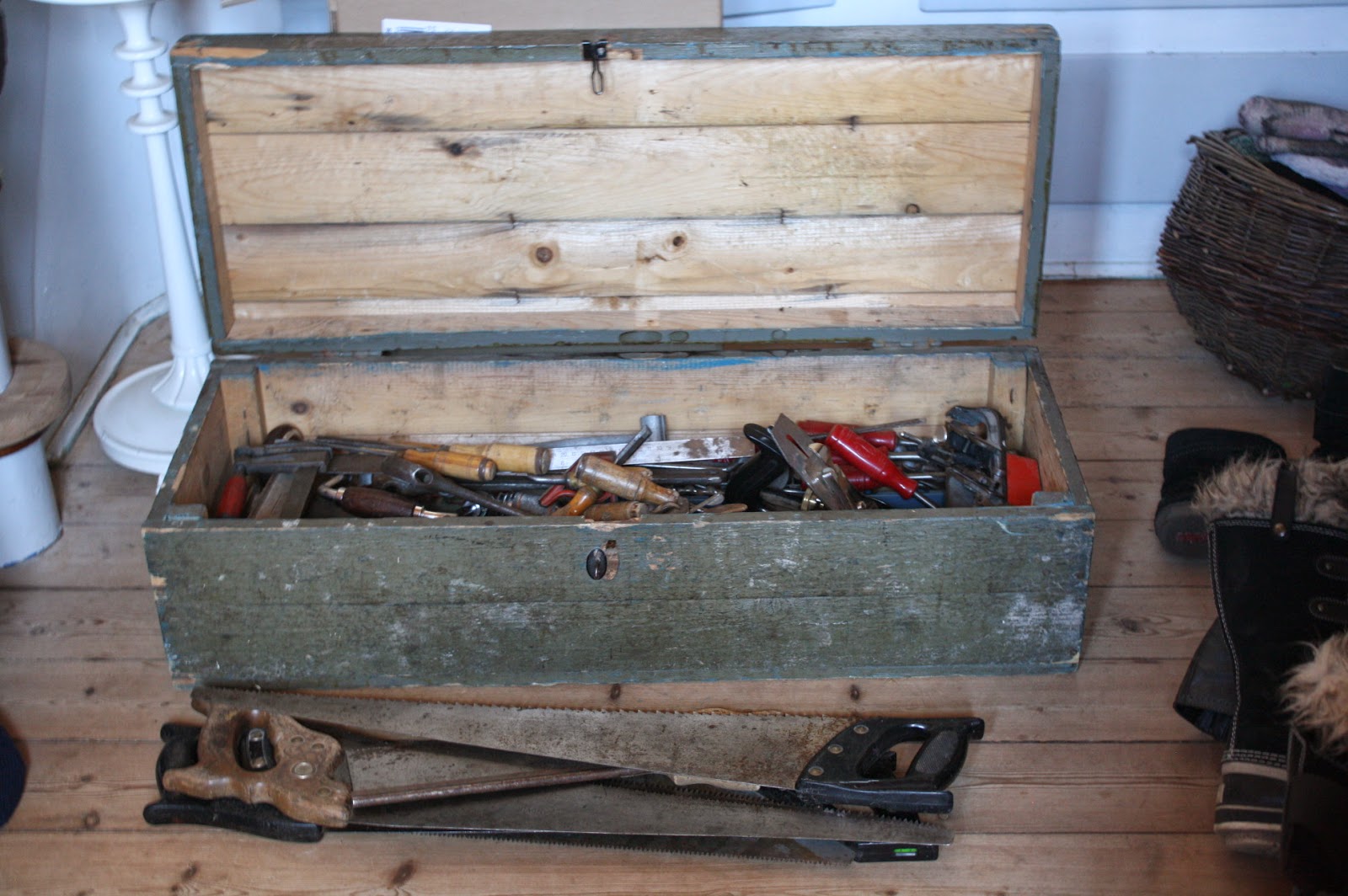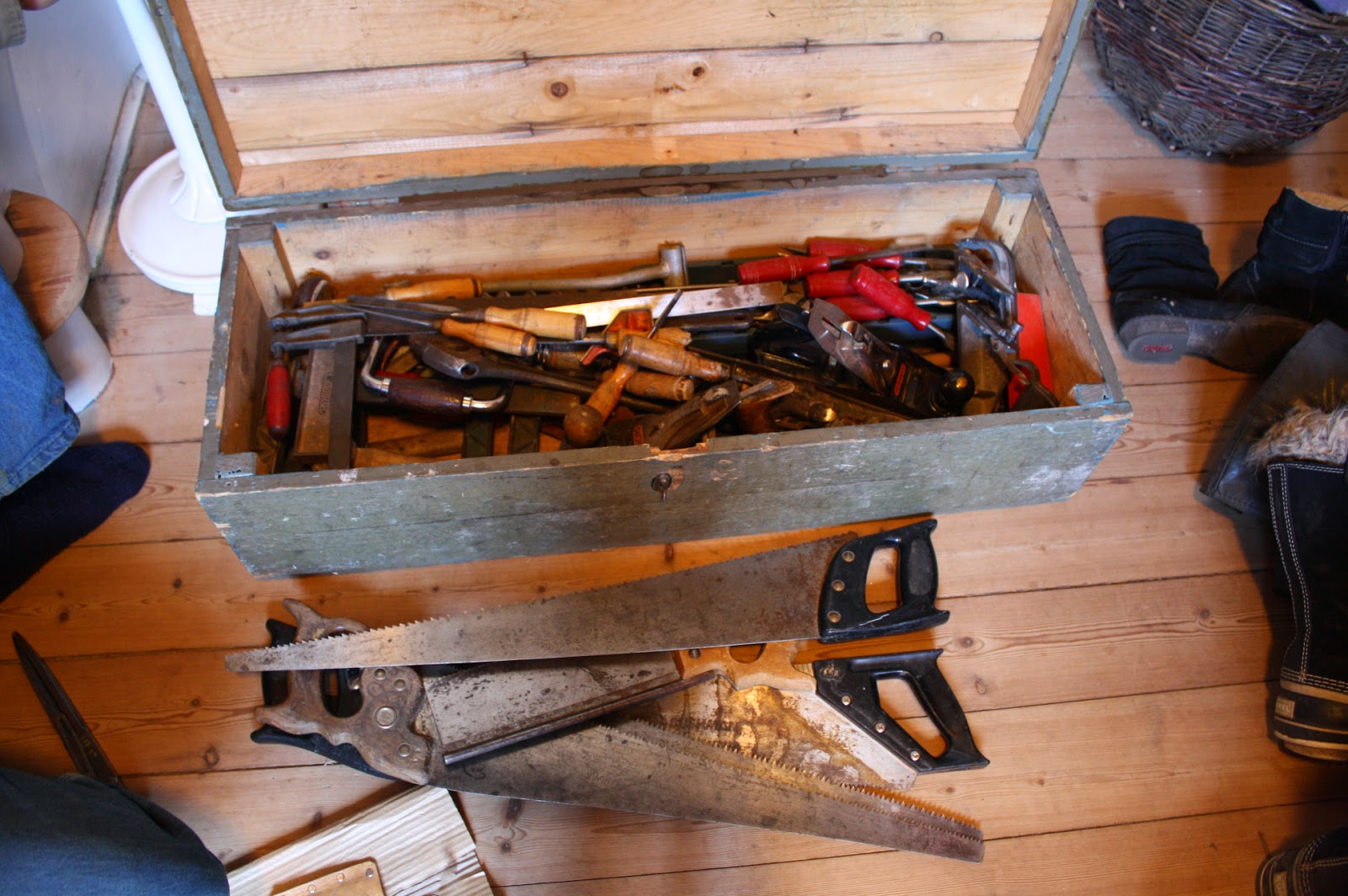I sawed out the tenons and the "mortise" using a hacksaw.
I am not sure if it is called a mortise for this type of joint, but until I find out, that is what I am going to call it.
I am becoming increasingly skilled at sawing out mortises with a hacksaw, so the joints went together with only a minimal trimming of one of the tenons.
The frame wasn't completely square, but I didn't expect it to be. I had made the parts slightly oversized to be able to deal with this situation.
The way I do it is similar to trimming the mitred dovetail joint:
I assemble the frame and square it up by measuring the diagonals. Each joint is pressed together until it makes contact somewhere. Next I clamp the dry assembly to a flat piece of wood taking care that each member of the frame is secured.
With a thin kerfed saw I saw down the middle of the joint, removing a little bit of materials from each side at the same time.
The frame is then flipped over and the joints on the other side receive the same treatment.
Usually I can get by with one or two rounds of doing this, but it all depends on how accurate you manage to make the mitres in the first place.
With the frame square and with tight joints, I measured the size for the floating panel.
I do this by measuring the "hole" in the frame, and then I add twice the depth of the groove to each measurement. Since this wood is bone dry, I am pretty sure it will expand when I bring the tools chest into my workshop at home. Therefore I subtracted a couple of mm's on the width to allow the panel to expand a little.
The panel was then brought to the desired size, and I ploughed a groove on all four sides of it to allow it to fit in the panel.
When I was done I made a test assembly before fetching the glue.
For glueing up this sort of lid, I allow the panel to be completely floating. So I only add glue to the mitred joints of the frame.
I added some clamps on the joints to make sure the walls of the mortises were pressed firmly together. It wasn't really necessary, but it doesn't hurt to do it, as long as you remember to put some blocks of wood between the clamps and the frame to avoid marring the surface.
The lid went to the top of the transformer for drying, and I started out attaching the bottom of the chest.
First I laid out the ship lapped boards and numbered them. I then ripped the end boards to make them approximately the same width. One of the end boards had some ugly tear out, so I opted for removing this instead of the two boards being the same width. I doubt that anyone will ever notice.
The bottom boards were then cross cut to the required length.
Since the rabbet is a bit shallow, I pre drilled holes at a slight angle to prevent them from accidentally wandering into the chest.
I glued the first board to the end of the chest before nailing it on. The remaining boards were mounted without any glue. To allow for some movement, I used a spacer to create a small distance between each board before attaching it. In this case the spacer is a 0.5 mm shim that I found in the junk box. The last board was also glued to the end of the chest before hammering in the nails.
My reason for doing this is that it will add some strength to the ends so the rabbets hopefully wont break as luggage handlers shift my bag in airports.
Test assembly of the lid.
Attaching the bottom, note spacer.
Detail of the mitred dovetail.
Testing the lid on the carcase.



































